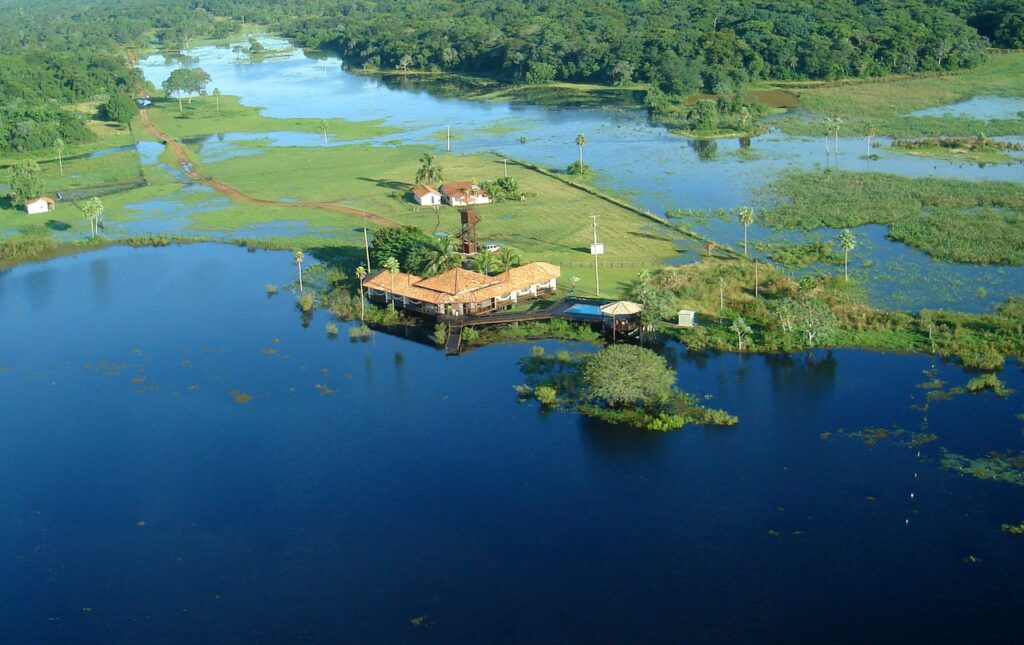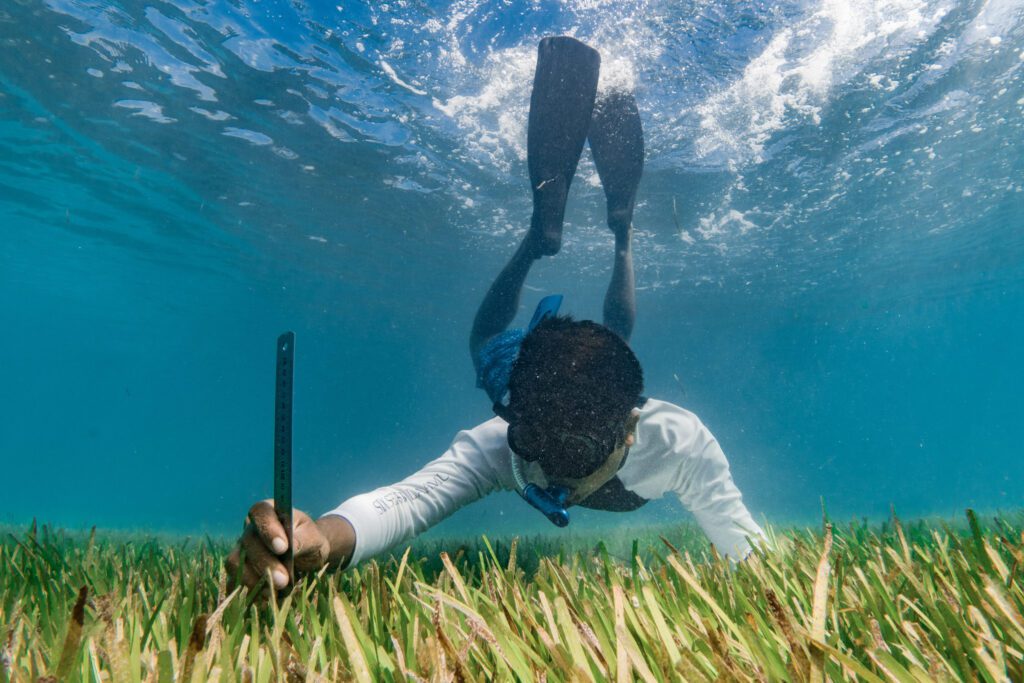By Holly Tuppen, Communications Manager at The Long Run.
The Long Run was born out of the need for greater collaboration between conservation-minded tourism businesses, and a desire to embed sustainability into the heart of business operations. Founded by Jochen Zeitz in 2009, the not-for-profit organisation is a collection of lodges, affiliates and partners that demonstrate the utmost commitment to safeguarding fragile ecosystems and empowering communities. Collectively, over 40 global members protect 23.5 million acres of biodiversity and improve the lives of 750,000 people.
The Long Run is one of many Communities for a Half-Earth Future, which have a sense of common purpose in working together towards the goal of Half-Earth. We believe that, when done well, nature-based tourism can contribute to Half-Earth by:


The simultaneous climate and biodiversity crises demonstrate that it is no longer enough to minimise our impact on earth; instead, we have to seek regeneration, renewal and positive impact in everything we do. Travel and business are no exception.
With this in mind, a key criterion to become a Long Run member is owning or having influence over a significant and vital chunk of biodiversity. From the swathes of seagrass protected by Six Senses Laamu in The Maldives to one of southern Africa’s most ambitious rewilding projects at Twsalu, sustainably supporting landscapes and nature is our utmost priority.
We are not a collection of tourism businesses looking to operate more sustainably; we are passionate conservationists and environmentalists looking for the lowest impact way to fund our mission.
Holistic management via the 4Cs
The 4Cs framework provides a concrete way for businesses to internalise sustainability in their operations and decision-making. It recognizes the importance of business viability to secure biodiversity conservation and community well-being in the long term. Reciprocally, it emphasises the importance of thriving ecosystems and communities in sustaining nature-based businesses.
Conservation
Biodiversity is life. Conservation is safeguarding this biodiversity and the integrity of the ecosystem services it provides to support global needs. Conservation is core to all Long Runners. They support the sustainable use of natural resources that safeguards the integrity of the planet in their area. Aspects of this C include biodiversity and ecosystem services as well as the management of energy, water and waste, land planning and carbon reduction.
Community
It is the right of every person to have their basic needs met and enhancing the well-being of communities is a fundamental obligation of all. Long Runners support activities that are designed by and empower the communities they belong to or interact with. This C addresses fair working conditions, diversity and inclusion, community relations, social infrastructure, social accountability, capacity building and support for small and medium enterprises (SMEs).
Culture
We believe that celebrating commonality and respecting difference is what nurtures understanding, propels a global mindset, and is crucial to our future. Our ability to innovate and evolve is what makes us uniquely human. Drawing on our uniqueness, we enrich each other and contribute to a greater common good. Long Runners strive to strengthen intercultural relationships and understanding and safeguard cultural heritage while raising awareness of cultural diversity. This C addresses cultural heritage site protection, nurturing heritage on community terms, cultural heritage promotion and awareness, respect, and cultural exchange.
Commerce
Uncontrolled commerce (whether in tourism or other industries) has devastating impacts on our planet. Conducted holistically and sustainably, however, business can be a positive contributor to the goal of Half-Earth. This C scrutinises the sustainability of commercial operations recognising the intricate link between profit and natural and social assets. Viable businesses provide a source of income for people that depend on it, as well as long term investment back into the 4Cs.
Shifting mindsets
As E.O. Wilson says, “Unless humanity learns a great deal more about global biodiversity and moves quickly to protect it, we will soon lose most of the species composing life on Earth.” The Long Run believes that travel, whether in our minds or on the ground, can and must play a more significant role in deepening our understanding of nature, our planetary boundaries, and the role we each play within the intricate web of life.


The Long Run recognises that while operators and businesses embed the 4Cs into everything they do, travellers also need to go through a transformation. Truly responsible and regenerative experiences must change mindsets and have a lasting impact.
Thankfully change is coming; today, discerning travellers want to contribute to and connect with cultures and the natural world, rather than exploit them. They increasingly seek access to pristine ecosystems, to embark on journeys with pioneers, and eat local delicacies under the stars. As a collective, we aspire to nurture this shift and create tools to ensure that our guests and visitors have a positive impact not only while they are away, but also once they return home.
Growth and collaboration


Securing the protection of land and wildlife is a benchmark of success for The Long Run members. Delphine King, Executive Director of The Long Run, emphasises the urgency of our task, “We are losing species at 1000 times the natural rate of decline due to habitat loss and fragmentation from human pressures including population growth and the intensification of farming.”
Over the last thirty years, Long Run members like Borana’s Michael Dyer (Laikipia) and Caiman’s Roberto Klabin (The Pantanal), have transformed their land management approach to allow humans and wildlife to thrive side-by-side. The Borana-Lewa landscape now hosts 14 per cent of Kenya’s black and southern white rhinos, and in Caiman, jaguar sightings have increased by 80 per cent since 2012.
Tourism is a vital part of these success stories; without the revenue made from visitors and their growing interest, businesses like Borana and Caiman have no means to persuade stakeholders, including local communities, neighbouring landowners and governments, to work together to secure a species’ future.
Where governments and private landowners lack the resources or will that’s needed to protect vital ecosystems, collaboration is crucial. The Long Run is acutely aware that meaningful conservation can’t be achieved in isolation. King continues, “Connecting wild landscapes is the only way to sustain conservation efforts in the future — this involves joining the dots between people and places. The Half-Earth Project now provides us with a global picture, and the data required, to hone in our efforts on the places most in need of protection. We believe that this, combined with our 4C model to ensure that communities benefit from conservation, paints an increasingly hopeful picture for the future.”
Just as wildlife transcends boundaries, so should our efforts to protect it. By creating protected corridors of land to link private reserves and national parks, sharing conservation goals with surrounding landowners, and educating neighbouring communities, Long Run members more than double their efforts. We hope that through the Half-Earth Project, others will, too.
Find out more at https://www.thelongrun.org

